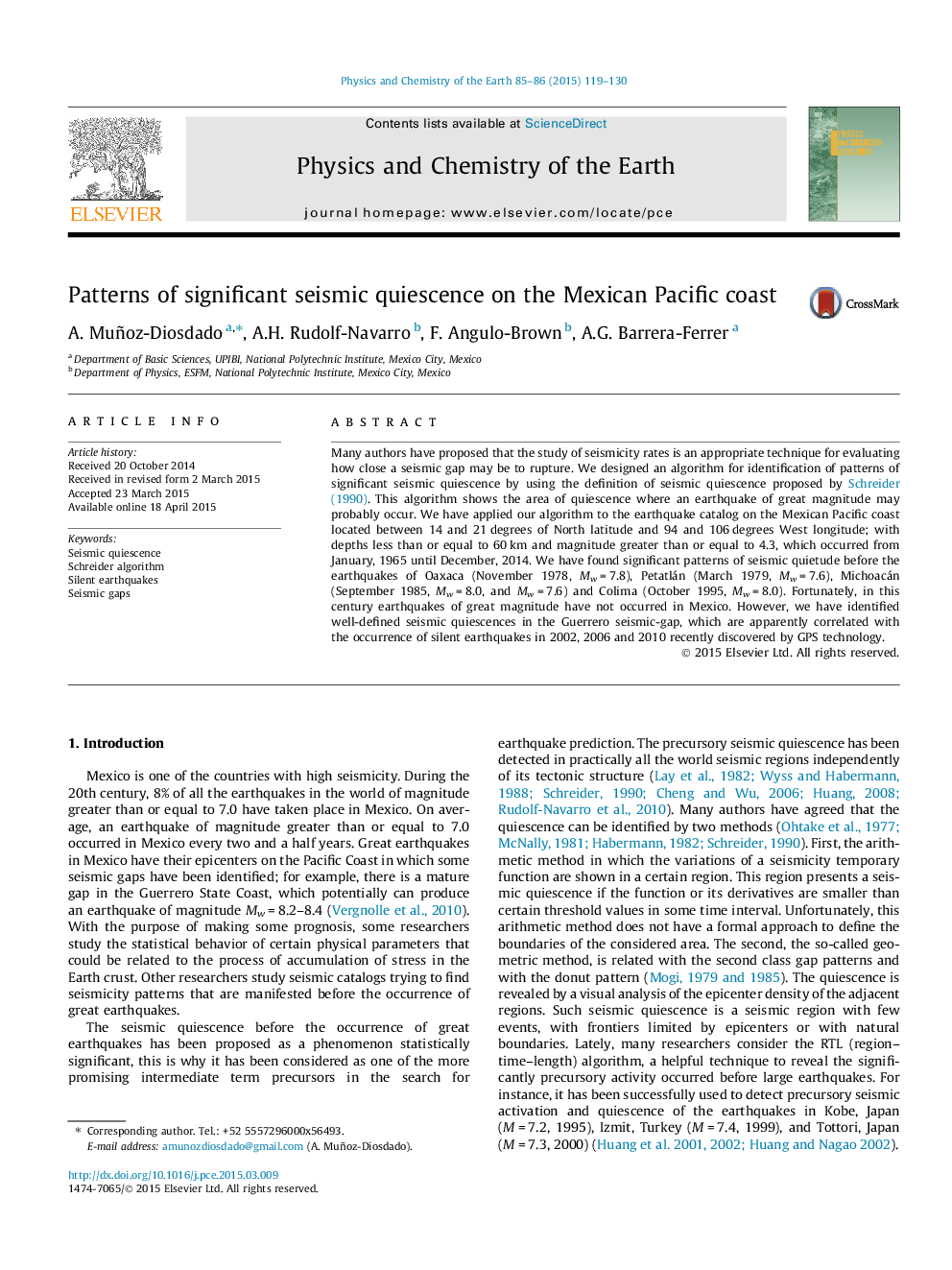| Article ID | Journal | Published Year | Pages | File Type |
|---|---|---|---|---|
| 4720938 | Physics and Chemistry of the Earth, Parts A/B/C | 2015 | 12 Pages |
•Actualization of the Schreider algorithm.•In the last decades main earthquakes on the Mexican Pacific coast were preceded by seismic quiescence.•A new color code for visualization of seismicity.•Differentiation between significant and non-significant quiescences.
Many authors have proposed that the study of seismicity rates is an appropriate technique for evaluating how close a seismic gap may be to rupture. We designed an algorithm for identification of patterns of significant seismic quiescence by using the definition of seismic quiescence proposed by Schreider (1990). This algorithm shows the area of quiescence where an earthquake of great magnitude may probably occur. We have applied our algorithm to the earthquake catalog on the Mexican Pacific coast located between 14 and 21 degrees of North latitude and 94 and 106 degrees West longitude; with depths less than or equal to 60 km and magnitude greater than or equal to 4.3, which occurred from January, 1965 until December, 2014. We have found significant patterns of seismic quietude before the earthquakes of Oaxaca (November 1978, Mw = 7.8), Petatlán (March 1979, Mw = 7.6), Michoacán (September 1985, Mw = 8.0, and Mw = 7.6) and Colima (October 1995, Mw = 8.0). Fortunately, in this century earthquakes of great magnitude have not occurred in Mexico. However, we have identified well-defined seismic quiescences in the Guerrero seismic-gap, which are apparently correlated with the occurrence of silent earthquakes in 2002, 2006 and 2010 recently discovered by GPS technology.
